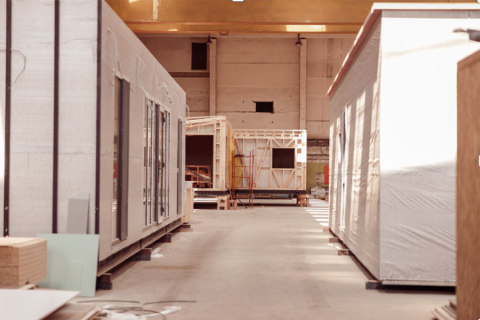A consortium of Vermont housing and community development partners are assessing the Vermont landscape for off-site construction (including panelized construction), modular, and manufactured home initiatives. As local and state policy makers take steps to meet housing needs, the potential of advanced construction approaches continues to draw significant interest. Advocates point to benefits in terms of cost savings, labor, volume, climate and design and building standardization.

If you are an emerging or established manufacturer in this area, please take this survey so we can accurately inventory current initiatives in Vermont. We would also like to learn more about how Vermont developers and builders are using off-site materials so encourage you to share reflections directly with VHFA’s Managing Director of Community Development Seth Leonard.
Survey results and reflections from developers will be used to complete a written report that will be publicly available in October or November. The report will assess whether/how Vermont could provide investment or policy supports to advance off-site, modular, and manufactured construction methodologies.
Potential benefits of off-site construction have been suggested in several existing studies, including a 2022 report from the Bipartisan Policy Center and a 2017 report from the Terner Center at the UC Berkeley. Vermont’s research this year will look at how these types of benefits apply here and how they could inform public investment in new building methodologies.
Potential benefits of off-site residential construction
- Cost savings: Off-site, modular, and manufactured construction methods could provide shorter project timelines, along with a higher degree of building quality consistency. While results on cost efficiency through advanced building methods are mixed, proponents point to time savings as the greatest driver of financial benefit.
- Labor shortage: Off-site, modular, and manufactured construction methods could mitigate labor shortages. Estimates by the Associated Builders and Contractors indicate the United States needs 501,000 additional workers, beyond normal hiring pace, to meet current building pace and demand.
- Higher volume of building: Off-site, modular, and manufactured homes can be produced in a way that capitalizes on economies of scale.
- Statewide climate goals: Off-site, modular and manufactured homes offer an efficient and more cost-effective way to prioritize energy efficiency and decarbonization. This includes more climate-friendly homes and less waste in the construction process.
- Standardize design and building standards: Advanced building methodologies could be used to create homes that are compliant with state and local codes (both form and function) without intensive on-the-ground regulatory inspection requirements.

